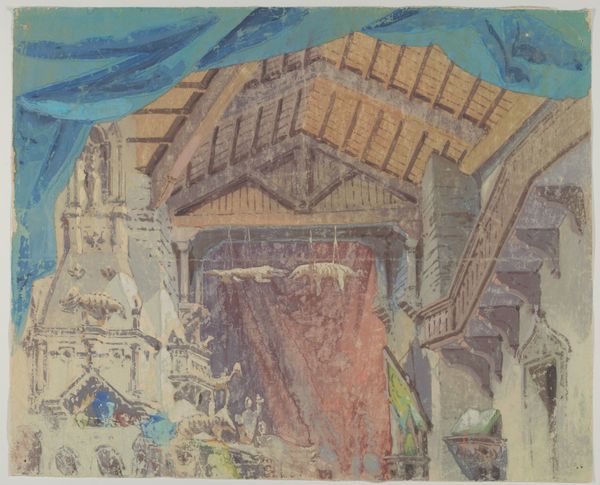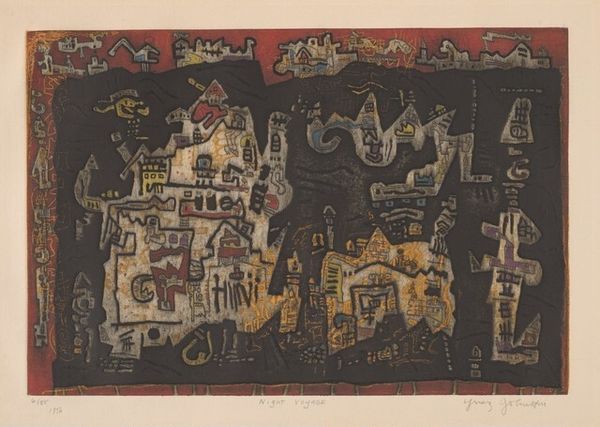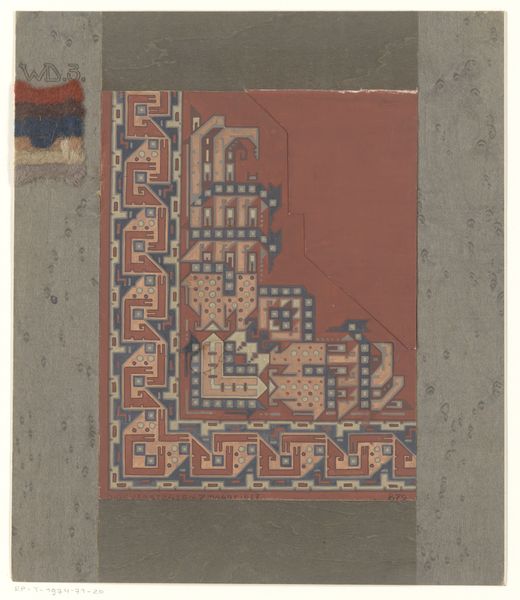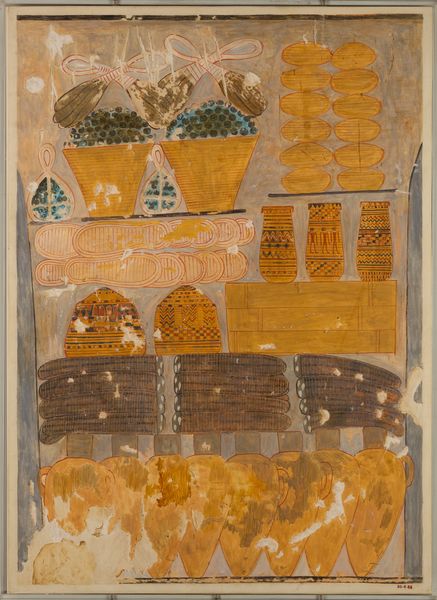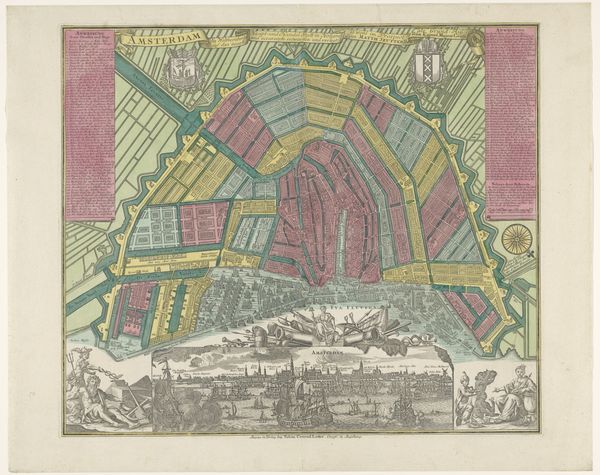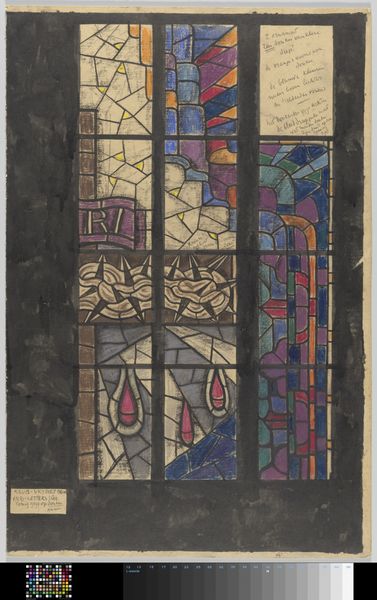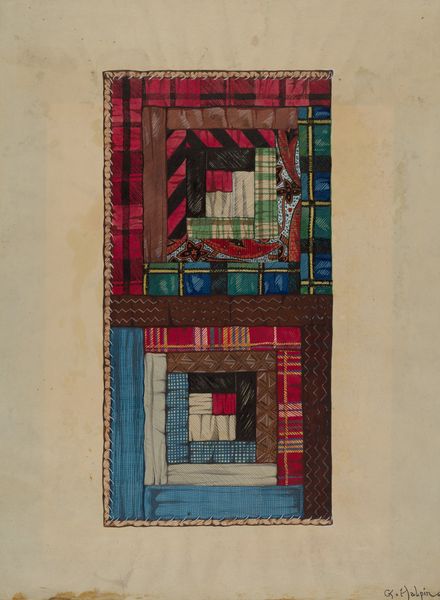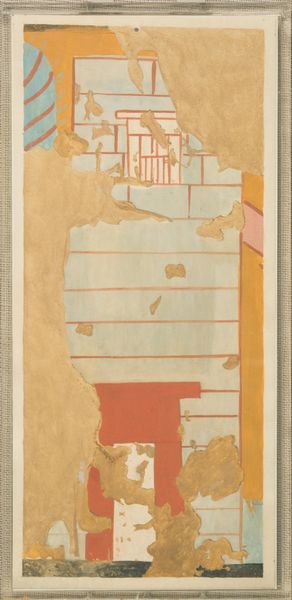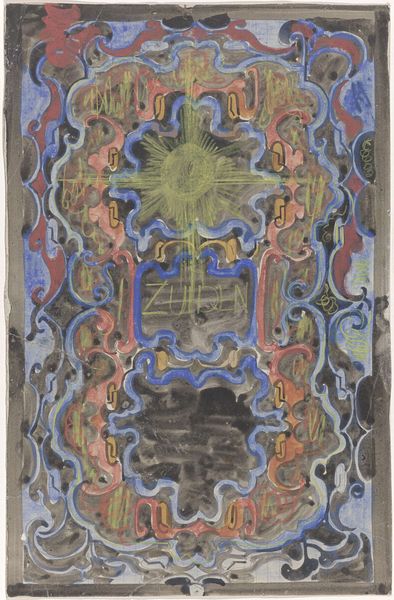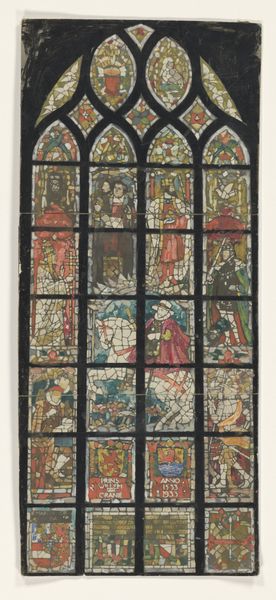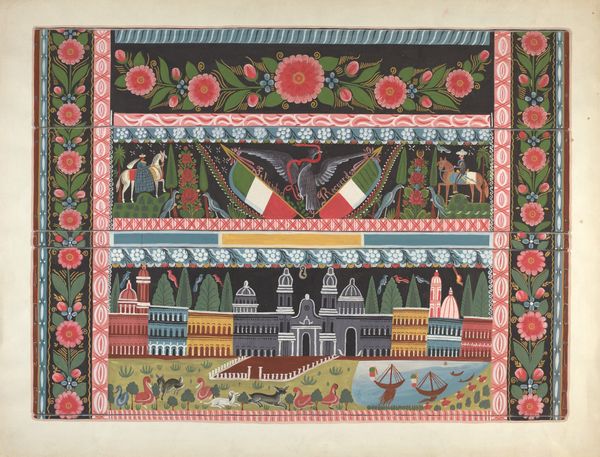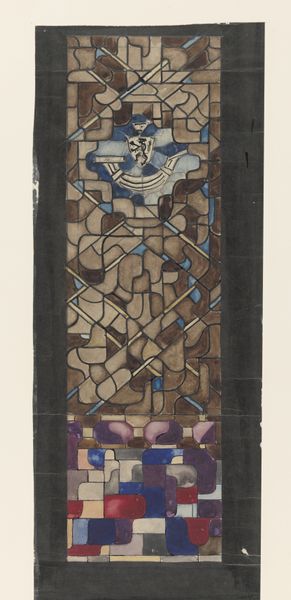
mixed-media, assemblage, painting, textile, acrylic-paint
#
african-art
#
mixed-media
#
contemporary
#
narrative-art
#
assemblage
#
painting
#
graffiti art
#
landscape
#
textile
#
acrylic-paint
#
mural art
#
feminist-art
#
urban art
#
group-portraits
#
cityscape
#
painting art
#
mixed media
Copyright: Faith Ringgold,Fair Use
Curator: Here we have Faith Ringgold’s mixed-media work, “Woman on a Bridge #1 of 5: Tar Beach,” created in 1988. What strikes you first about it? Editor: The immediate impression is warmth—both literally and figuratively. The patchwork border, the depiction of family on a rooftop… it evokes a strong sense of intimacy and handcrafted care. Curator: Ringgold is celebrated for her story quilts. "Tar Beach," part of her "Woman on a Bridge" series, combines painting, narrative, and quilting, pushing the boundaries of traditional art forms and challenging established hierarchies. The “tar beach” itself is a reference to the roof of her childhood home in Harlem. Editor: The choice of materials—fabric, paint, thread—all speak to a specific tradition of making, one rooted in domesticity and historically associated with women's work. Look at how she uses those borders! The text and textiles almost act as a frame, drawing us into the scene. Curator: Exactly! Ringgold's practice disrupts the idea of "high" versus "low" art. By using the traditionally "feminine" craft of quilting, she elevates personal narratives and challenges the exclusion of African American experiences from the mainstream art world. Notice how the cityscape of New York is both a backdrop and a character itself, underscoring the social and political environment in which this story unfolds. Editor: The rooftop scene itself depicts leisure—a family enjoying a meal. However, the inclusion of that prone figure, seemingly dreaming of flight above the city, hints at aspiration, but also perhaps the socio-economic limitations placed on Black communities in accessing those aspirations. How do the materials contribute to this narrative, do you think? Curator: I agree entirely with your points. Also, consider how the textures of the quilted borders contrast with the smoother painted central image. This contrast represents a merging of domestic space with larger urban realities. In her bridging of lived experiences and material practices, Ringgold presents powerful statements on race, class, and gender politics. The stitches themselves become threads in a broader tapestry of American history. Editor: Seeing Ringgold’s method through the lens of her lived context has certainly added more depth to my understanding. Thanks for spotlighting these compelling perspectives! Curator: My pleasure. And I find your insight into the craft and material language particularly enriches the meaning of this piece, it reminds me to always consider who is doing the labor in every artwork.
Comments
No comments
Be the first to comment and join the conversation on the ultimate creative platform.
